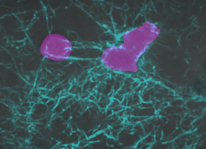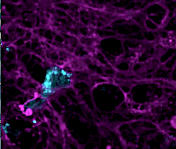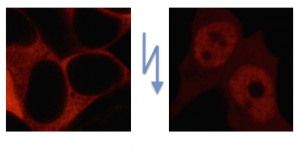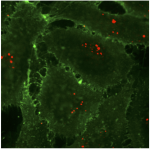 Engelke Group - Faculty for Chemistry and Pharmacy
Engelke Group - Faculty for Chemistry and Pharmacy
 Engelke Group - Faculty for Chemistry and Pharmacy
Engelke Group - Faculty for Chemistry and Pharmacy


Cells are surrounded by the extracellular matrix, which they constantly interact with. How does the extracellular matrix influence cell behavior and vice versa? Focusing on mechanical aspects, we tackle this question using biophysical techniques. Further, we develop tools to manipulate cell behavior via remodeling the surrounding matrix.

Protein translocation into the nucleus is used by cellsfor control of a manifold of signaling pathways.Thus, control over nuclear translocation of proteins allows for manipulation of many cellular processes and also cell behavior. With our collaborators we have developed a tool to optically control nuclear translocation of proteins. We are now using this tool to manipulate cellular processes. Furthermore, this method facilitates the study of protein dynamics upon entry into the nucleus.
 Nanoparticles are emerging as valuable tools to manipulate cell behavior, e.g. as drug carriers. They can be tailored to release drugs or act as a drug themselves at a target region under control of certain stimuli such as light or pH. We investigate the effect of such drug-delivering nanoparticles on cells, and also use these particles to manipulate the extracellular matrix.
Nanoparticles are emerging as valuable tools to manipulate cell behavior, e.g. as drug carriers. They can be tailored to release drugs or act as a drug themselves at a target region under control of certain stimuli such as light or pH. We investigate the effect of such drug-delivering nanoparticles on cells, and also use these particles to manipulate the extracellular matrix.